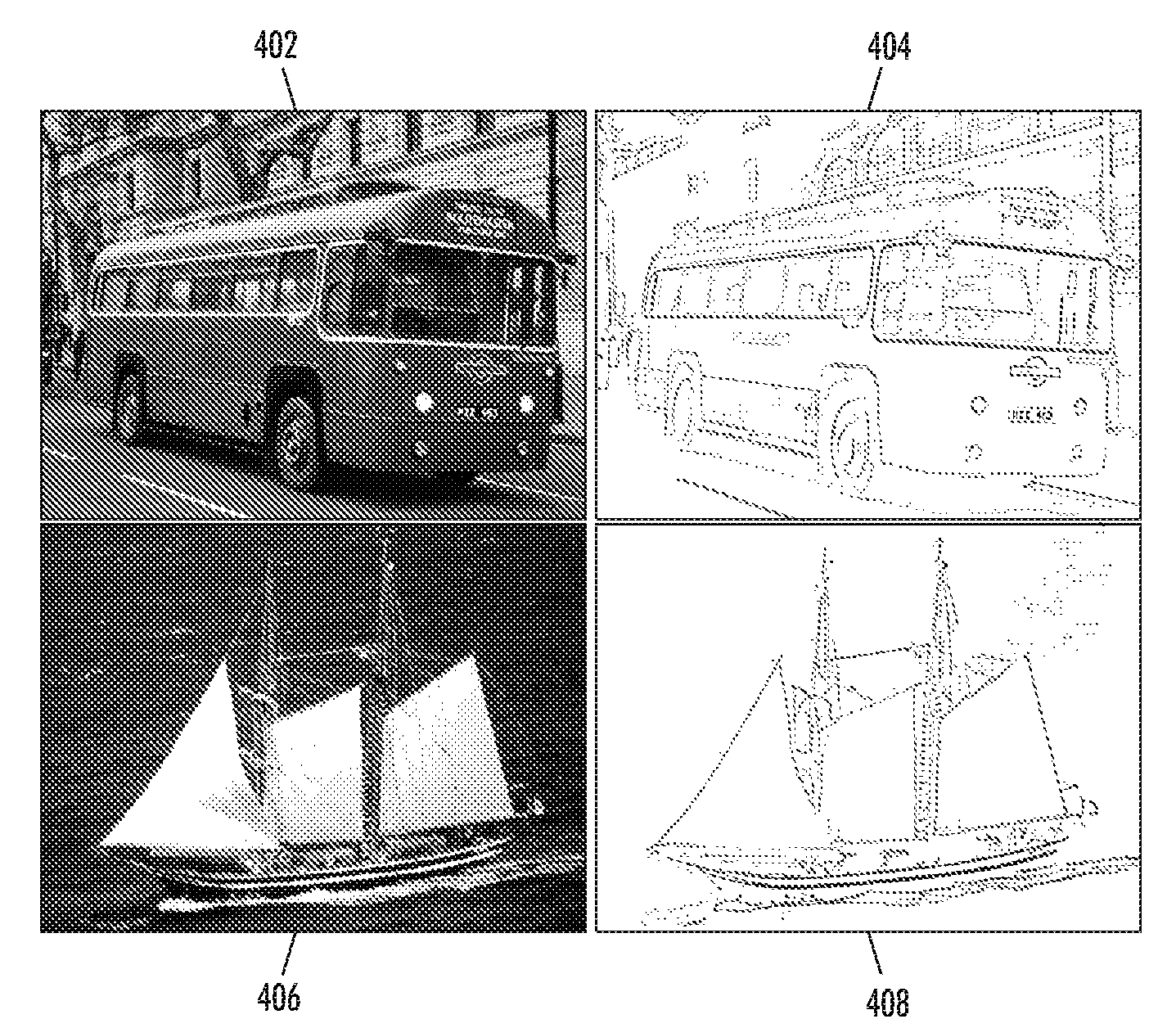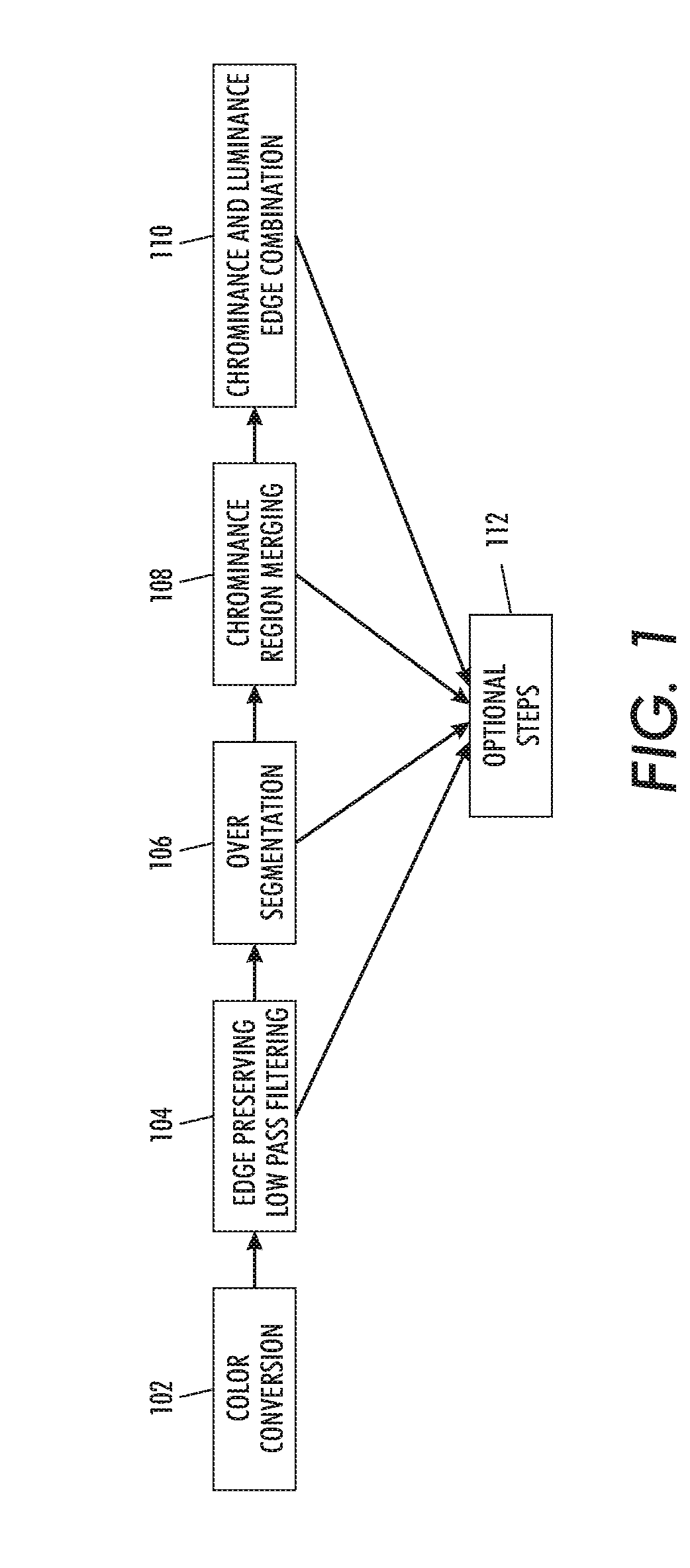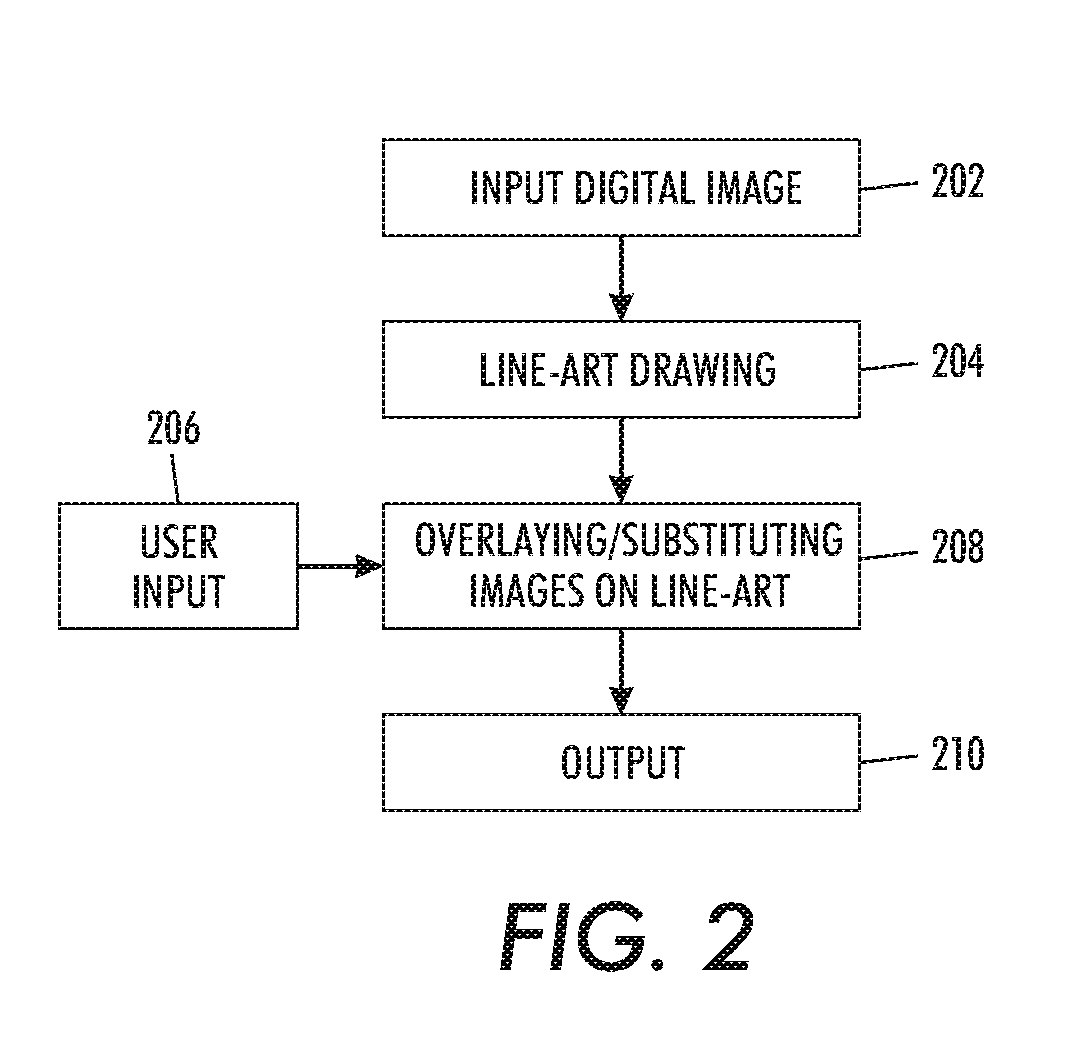Forming coloring books from digital images
- Summary
- Abstract
- Description
- Claims
- Application Information
AI Technical Summary
Benefits of technology
Problems solved by technology
Method used
Image
Examples
Embodiment Construction
[0029]Children enjoy coloring. If given the option, children will prefer to select the pictures they want to color, e.g., characters from their favorite cartoons, images from a particular subject they find in the internet, personal family photos, etc. In addition, children like browsing their own family albums and looking at their own photos. Coloring images (sheets to be colored) are generally simple black and white silhouette or border images with well separated regions, each corresponding to a different color. These images can also present several differences in style. One challenge addressed by embodiments here is to obtain coloring images from the arbitrary types of images children might be interested in coloring (i.e., photographs and cartoons). This problem can be seen as a particular case and application of photographic stylization and abstraction. Thus, the embodiments herein provide processes, systems, services, computer programs, etc. for the automatic creation of colorin...
PUM
 Login to View More
Login to View More Abstract
Description
Claims
Application Information
 Login to View More
Login to View More - R&D
- Intellectual Property
- Life Sciences
- Materials
- Tech Scout
- Unparalleled Data Quality
- Higher Quality Content
- 60% Fewer Hallucinations
Browse by: Latest US Patents, China's latest patents, Technical Efficacy Thesaurus, Application Domain, Technology Topic, Popular Technical Reports.
© 2025 PatSnap. All rights reserved.Legal|Privacy policy|Modern Slavery Act Transparency Statement|Sitemap|About US| Contact US: help@patsnap.com



